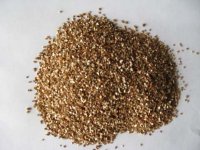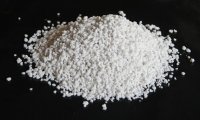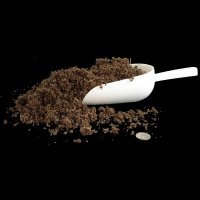Circle-M-Farm
Attractive To Bees
The information below is from the book " The Complete Book Of Growing Plants From Seed" by Elda Haring. I thought it may help some of the amateurs and novalis alike.
Vermiculite
This is a form of expanded mica with a tremendous capacity for holding moisture. It can be used with excellent results. The agriculture grade used for seed starting is the one known as "Terralite" the granules are relatively small and the product dust free. Some gardeners find that it is inclined to hold too much moisture and I agree that it can be tricky to control.
Milled Sphagnum
Finely milled sphagnum moss has been used for starting seedlings for a good many years. Used alone, in most cases, it gives excellent results. Many of our gardening friends use this medium alone for starting plants and find it most highly suitable. However, in our experience we find it has a tendency to "cake" or "crust," especially when used for seeds which need a long period for germination. We have had some of the more vigorous seedlings come up with a cruston the seedling leaves, appearing as though they were wearing straw mandarin hats!
Perlite
Perlite, a volcanic ash, when used alone has one or two qualities which we don't like. It stays quite cool or even chilly, which might possibly be good for those seeds which need to be kept cool for germination but not so for those which need warmth. It does not absorb moisture but rather holds the moisture around each little granule and it has a tendency to float and disturb the seed bed, which we find objectionable.
Equal Parts Of Vermiculite, Milled Sphagnum And Perlite
Our personal preference for starting seeds is a mixture of a three of these in which the composite mix seems to result in a blend of the advantages of all three, without there faults. We feel this is the perfect mix. It is light, clean and easy to handle. It holds moisture but readily drains. For those gardeners who have not been absolutely satisfied with the seed medium they have been using I can recommend this mixture whole-heartedly. Since we have been using vermiculite and/ or this mix, hard seeds like those of lupine and morning glory which authorities assert must be soaked or nicked prior to sowing have for us germinated readily in three or four days. Seedlings in this mix, may, if necessary be fed with a liquid fertilizer to keep them healthy and strong. For this purpose we use either Rapid-Gro, Miracle-Gro, Hyponex or Plant Marvel, diluted to one-fourth strength when the seedlings are very small, increasing the strength to one-half that recommended on the package and feeding weekly until they are either transplanted to flats or placed directly from seed pan to the garden.
Vermiculite

Perlite

Milled Sphagnum Moss

Vermiculite
This is a form of expanded mica with a tremendous capacity for holding moisture. It can be used with excellent results. The agriculture grade used for seed starting is the one known as "Terralite" the granules are relatively small and the product dust free. Some gardeners find that it is inclined to hold too much moisture and I agree that it can be tricky to control.
Milled Sphagnum
Finely milled sphagnum moss has been used for starting seedlings for a good many years. Used alone, in most cases, it gives excellent results. Many of our gardening friends use this medium alone for starting plants and find it most highly suitable. However, in our experience we find it has a tendency to "cake" or "crust," especially when used for seeds which need a long period for germination. We have had some of the more vigorous seedlings come up with a cruston the seedling leaves, appearing as though they were wearing straw mandarin hats!
Perlite
Perlite, a volcanic ash, when used alone has one or two qualities which we don't like. It stays quite cool or even chilly, which might possibly be good for those seeds which need to be kept cool for germination but not so for those which need warmth. It does not absorb moisture but rather holds the moisture around each little granule and it has a tendency to float and disturb the seed bed, which we find objectionable.
Equal Parts Of Vermiculite, Milled Sphagnum And Perlite
Our personal preference for starting seeds is a mixture of a three of these in which the composite mix seems to result in a blend of the advantages of all three, without there faults. We feel this is the perfect mix. It is light, clean and easy to handle. It holds moisture but readily drains. For those gardeners who have not been absolutely satisfied with the seed medium they have been using I can recommend this mixture whole-heartedly. Since we have been using vermiculite and/ or this mix, hard seeds like those of lupine and morning glory which authorities assert must be soaked or nicked prior to sowing have for us germinated readily in three or four days. Seedlings in this mix, may, if necessary be fed with a liquid fertilizer to keep them healthy and strong. For this purpose we use either Rapid-Gro, Miracle-Gro, Hyponex or Plant Marvel, diluted to one-fourth strength when the seedlings are very small, increasing the strength to one-half that recommended on the package and feeding weekly until they are either transplanted to flats or placed directly from seed pan to the garden.
Vermiculite

Perlite

Milled Sphagnum Moss

Last edited:
